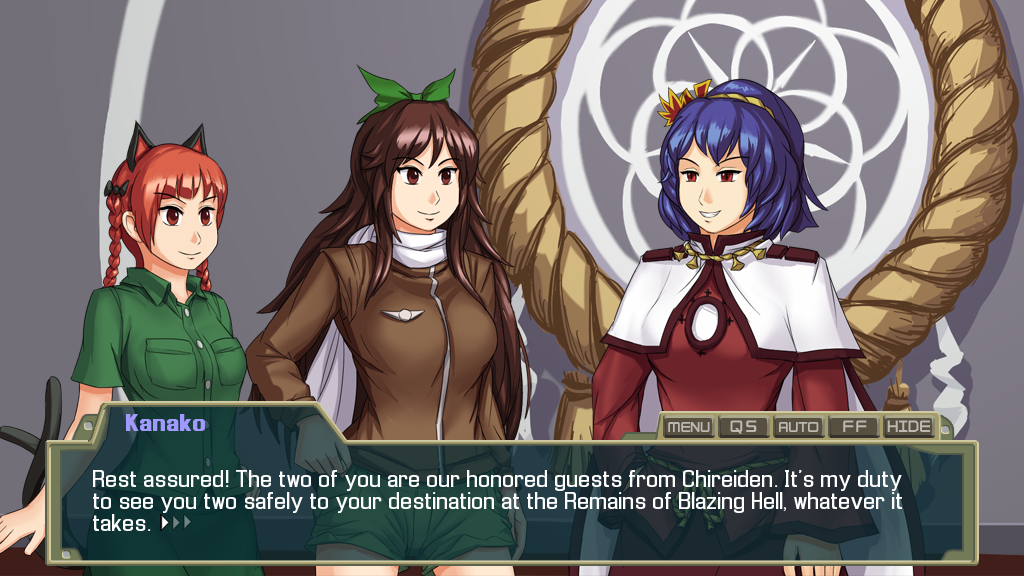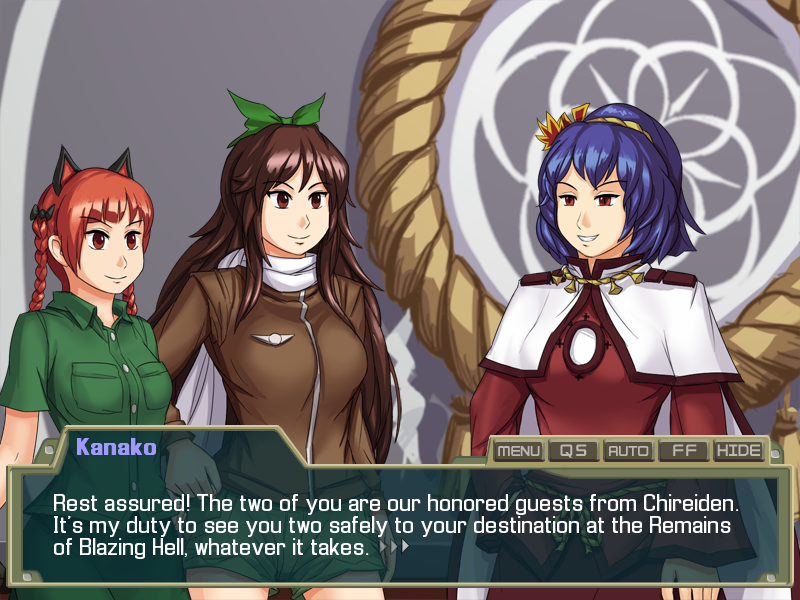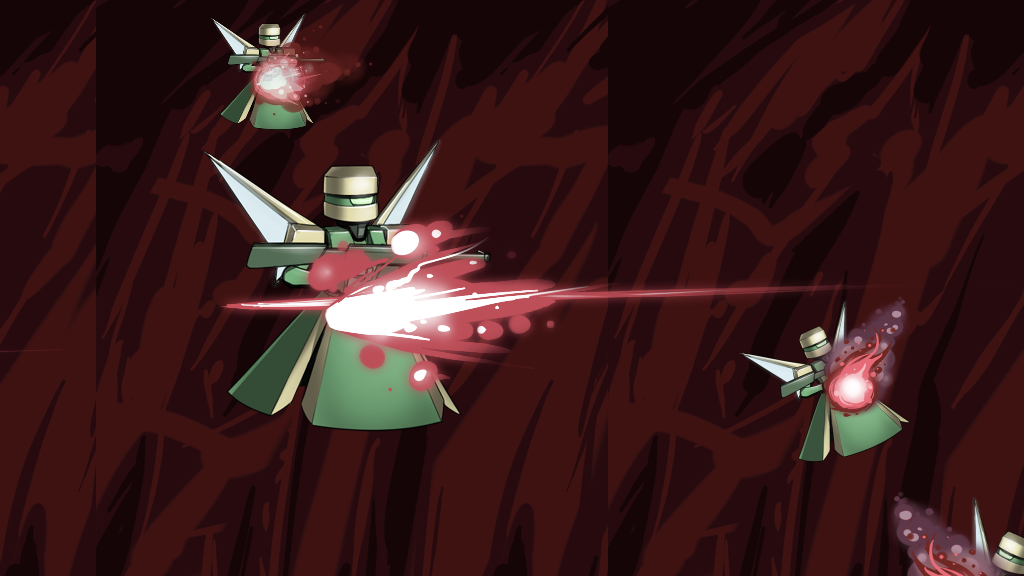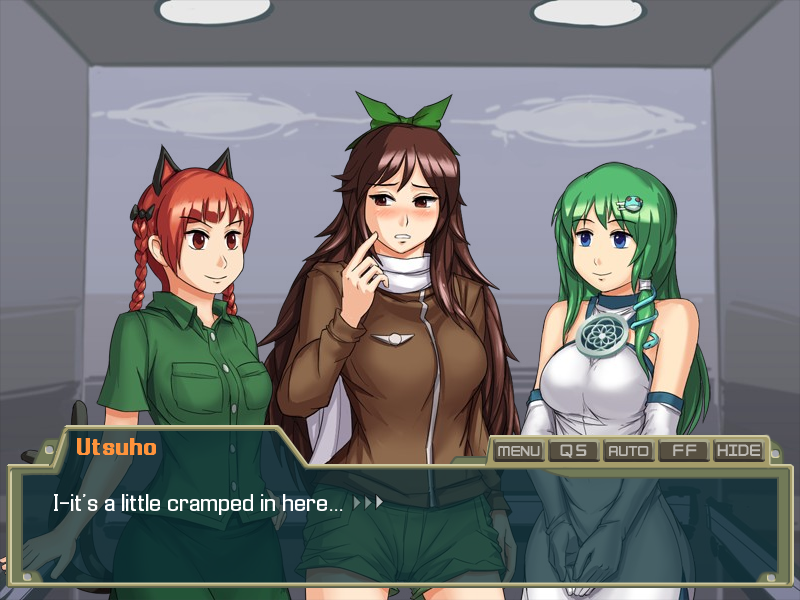Hello folks! It’s Graph, creator of Touhou Mecha. Over the summer I did a bit of drawing for other peoples’ game/VN projects, but since those games are still in development it’ll take a bit of time before those ventures bear fruit.
Meanwhile, I’m continuing my work on Touhou Mecha. I’ve decided to make a few key changes before starting on Chapter 2 proper:
1. Convert Touhou Mecha to widescreen resolution, or something close to it. Seen here:

For reference, here’s what it looked like before. It’s just 224 extra pixels, but the elbow room gained ain’t trivial! Now we don’t have to crowd the sprites together quite so much, other than the intentional ones like the elevator scene shown a couple of posts down.

2. Upgrade the game engine to Ren’py version 6.14. The DirectX compatibility seems to make it a bit more efficient than the previous 6.12, mostly by way of making my laptop fan run one speed quieter.
3. A rewrite of the first half of Chapter 1, based on some feedback I’ve gotten on Touhou Mecha’s first release. It’s more focused, going over the story so far so that you don’t have to dig up the webcomic to get what’s going on (it’s not like I want people to do that, at this point. Gives me more freedom to straight-up retcon that old thing). Also, the third-person narration that was present at the beginning has been replaced with a new battle scene!

The Chapter 1 re-release will also contain the TM Database mentioned in the previous post, and possibly other extras. We’ve got our work cut out for us, but I’m hoping for a November or early December release for this one. See you all again soon!


